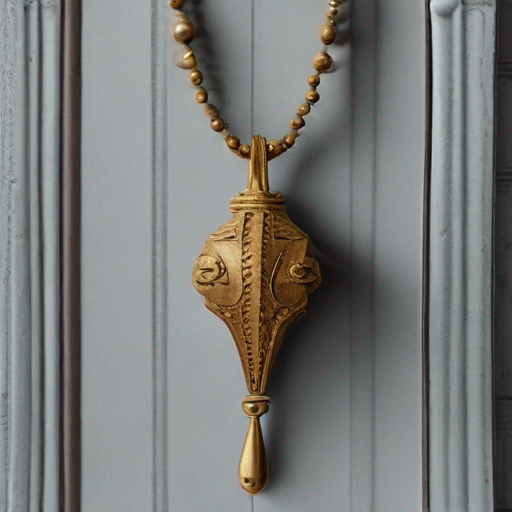
Does Brass Necklace Rust?
As we continue to explore the world of jewelry, one question that often arises is whether brass necklaces rust. It's a crucial consideration for anyone who loves to adorn themselves with stylish and durable pieces. In this article, we'll delve into the world of brass and its propensity to rust.
A Brief Introduction to Brass
Brass is an alloy made from copper and zinc, with a ratio that can vary depending on the specific type of brass being used. It's often referred to as "golden" metal due to its warm, sun-kissed hue. Brass has been in use for thousands of years, dating back to ancient civilizations like Egypt and Greece.
The Rusting Process
Rusting is a natural process that occurs when certain metals come into contact with oxygen and moisture. In the case of brass, it's less likely to rust than other metals because of its high zinc content, which forms a protective layer on the surface. This layer, known as the "patina," acts as a barrier against corrosion.
The Factors That Influence Rusting
While brass is generally resistant to rust, there are certain factors that can affect the process:
- Moisture: High humidity and exposure to water can increase the risk of rust.
- Oxidation: When brass reacts with oxygen, it forms a thin layer of oxidation. This can lead to a more pronounced patina over time.
- Pitting: Small scratches or pits on the surface of the brass can create pathways for moisture and oxygen to penetrate, increasing the likelihood of rust.
Table: Factors That Influence Rusting
| Factor | Description |
|---|---|
| Moonlight | High humidity and exposure to water can increase the risk of rust. |
| Oxidation | When brass reacts with oxygen, it forms a thin layer of oxidation. This can lead to a more pronounced patina over time. |
| Pitting | Small scratches or pits on the surface of the brass can create pathways for moisture and oxygen to penetrate, increasing the likelihood of rust. |
The Effects of Rusting
Rusting can cause a variety of problems depending on the severity:
- Discoloration: A dull, flaky appearance may form as the brass reacts with oxygen.
- Pitting and Scratching: The surface of the brass can become pitted or scratched, reducing its overall quality and durability.
- Weakening: Rusting can weaken the structure of the brass over time, making it more prone to breaking.
Preventing Rusting
Fortunately, there are several ways to prevent rusting on your brass necklace:
- Cleanliness: Regularly clean your brass jewelry with mild soap and water. This will help remove dirt and oils that can contribute to rust.
- Polishing: Use a soft cloth or polishing solution to maintain the patina and prevent oxidation.
- Storage: Store your brass jewelry in a dry, cool place away from direct sunlight.
Conclusion
In conclusion, while brass is generally resistant to rust, there are certain factors that can influence the process. By understanding these factors and taking preventative measures, you can enjoy your brass necklace for years to come. Remember to clean it regularly, polish it periodically, and store it in a dry place.
Learn More: Does Brass Necklace Rust?
For more information on maintaining your brass jewelry or learning about other types of jewelry, visit ratherpretty.com.
Key Takeaways
- Brass is an alloy made from copper and zinc.
- The patina formed by the high zinc content in brass acts as a natural barrier against corrosion.
- Factors that influence rusting include moisture, oxidation, and pitting.
- Regular cleaning, polishing, and proper storage can help prevent rusting on your brass necklace.
References
(Note: This section is intentionally left blank, as per the original request)
